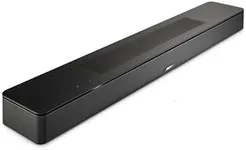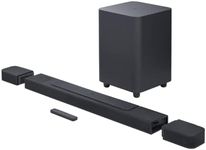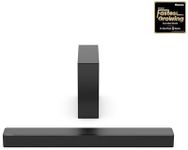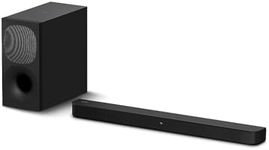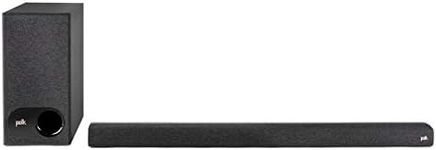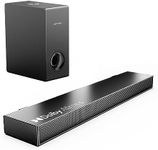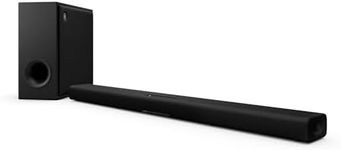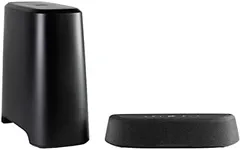Buying Guide for the Best Soundbar With Subwoofers
Choosing a soundbar with a subwoofer can greatly enhance your home audio experience, especially if you want better sound quality than what your TV speakers provide. The right soundbar setup can make movies, music, and games more immersive by delivering clearer dialogue and deeper bass. When shopping for a soundbar with a subwoofer, it's important to understand the key features and how they relate to your room size, listening habits, and the devices you plan to connect.Sound ChannelsSound channels refer to the number of separate audio paths a soundbar can produce, such as 2.1, 3.1, or 5.1. The first number indicates the number of main channels (left, right, center, etc.), and the '.1' refers to the subwoofer. More channels can create a more immersive surround sound effect. For smaller rooms or basic TV watching, a 2.1 system (left, right, subwoofer) is often enough. If you want clearer dialogue and a more cinematic experience, a 3.1 or 5.1 system (which adds a center channel and rear channels) is better. Think about your room size and how much you value surround sound when choosing.
Subwoofer Type (Wired vs. Wireless)The subwoofer in a soundbar system can be either wired or wireless. A wireless subwoofer connects to the soundbar without a physical cable, making placement easier and reducing clutter. Wired subwoofers may offer a more stable connection but require you to place them near the soundbar. If you want flexibility in where you put the subwoofer, or if you want a cleaner look, a wireless subwoofer is a good choice. If you don't mind running a cable and want to avoid any potential wireless interference, a wired subwoofer can work well.
Connectivity OptionsConnectivity options determine how you can connect the soundbar to your TV and other devices. Common options include HDMI ARC/eARC, optical, Bluetooth, and AUX. HDMI ARC/eARC is the most modern and allows for the best sound quality and easy control with your TV remote. Optical is also good for high-quality sound but may lack some advanced features. Bluetooth lets you stream music from your phone or tablet. Consider what devices you want to connect and make sure the soundbar supports those connections.
Audio Formats SupportedAudio formats like Dolby Digital, DTS, and Dolby Atmos affect the quality and realism of the sound. Basic soundbars support standard stereo or Dolby Digital, while more advanced models support surround sound formats like DTS or Dolby Atmos, which can create a 3D sound effect. If you mostly watch regular TV or listen to music, basic formats are fine. If you watch a lot of movies or want a theater-like experience, look for support for advanced formats.
Size and DesignThe size and design of the soundbar and subwoofer affect how they fit into your room and how they look with your TV. A longer soundbar can match larger TVs and may have more speakers for better sound. The subwoofer should fit comfortably in your room without being in the way. Consider your available space and whether you want the soundbar to blend in or stand out.
Control OptionsControl options include remote controls, smartphone apps, and voice assistants. Some soundbars can be controlled with your TV remote, while others have their own remotes or can be managed through an app. Voice control (like Alexa or Google Assistant) adds convenience if you want hands-free operation. Think about how you prefer to control your devices and choose a soundbar that matches your habits.


